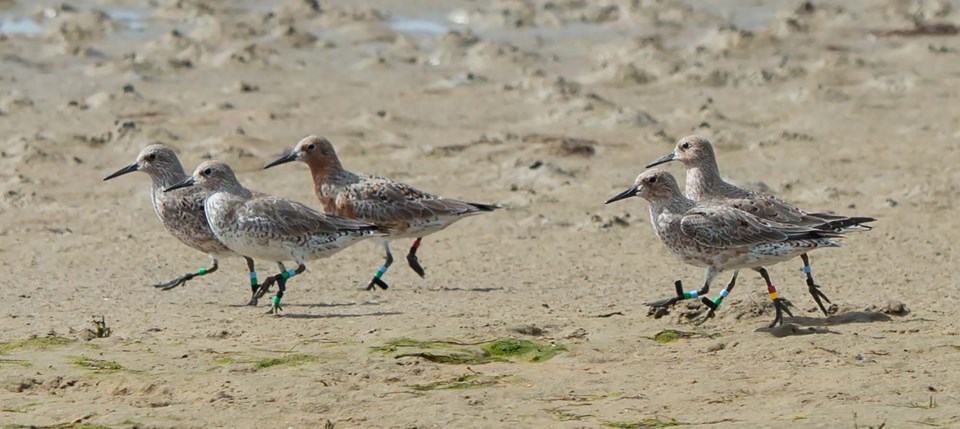New research coming out of the University of Alberta suggests birds have a remarkably obvious way to control their weight: diet and exercise.
U of A biologist Kimberley Mathot published a study Nov. 3 on how red knot birds manage their mass through diet and exercise.
Scientists have long known that birds are really, really good at controlling their weight, said Mathot, who is also the Canada Research Chair in Integrative Ecology. Give a dog unlimited food and it will grow fat, but do the same for a bird and it won’t – instead, it will just eat what it needs.
But scientists didn’t know how birds achieve that control, Mathot said. Dieting, exercise and metabolism were all possible mechanisms.
Inspired by a recent conference on animal energy budgets, Mathot and her team took a second look at two experiments she had previously done on red knots (a sandpiper with an orange-red chest found on every continent except Antarctica) at the Royal Netherlands Institute for Sea Research. One exposed the birds to a fake sparrowhawk (a predator), while the other switched their diet back and forth between their regular mud snails and super-nutritious fish pellets. Researchers logged the activities of each bird and tested their metabolism using airtight chambers that measured oxygen consumption.
Weight Watchers for birds?
In the first test, the team found birds exposed to fake predators gained less weight and spent less time foraging for food or moving about than normal. In the second, the team found the birds maintained their body mass and metabolic rate regardless of their food quality, but spent more time moving about and less time feeding when fed fish pellets (i.e. really good food) compared to snails. The team determined the birds were able to lose or maintain weight by regulating the amount they ate and exercised.
“Any dieter gets the advice to watch what you eat and get moving,” Mathot said.
“Maybe not surprisingly, that seems to be what’s working for birds.”
Researchers had thought birds under predation lost weight because they were too busy watching for threats to find food, but that wasn’t the case in the first experiment, where the birds had easy access to food in a feeder, Mathot said. This suggests at least some of the birds’ weight loss was due to self-restraint.
Birds likely have a strong evolutionary reason to manage their weight, said retired U of A wildlife biologist Lee Foote, who was not involved in Mathot’s study – fat birds don’t fly fast, and most birds need to be able to take flight at any moment. He noted how Canada geese will stand in a field of food and resist eating any of it in order to maintain optimal weight for migration.
“They seem to instinctively know there are optimal weights for every situation,” Foote said.
Foote said birds are like sports cars in terms of metabolism, which could help them burn off energy faster than mammals. Mathot said birds could also bulk up and slim down very fast – a chickadee can gain and lose 10 per cent of its mass in one winter day – and that rapid feedback could help them fine-tune their diet and exercise.
Foote said this study could have implications for conservation efforts. Shorebirds rely on proper body mass to migrate, and putting stress on them could affect their ability to keep a constant weight.
Mathot said she suspected most birds used diet and exercise to control their weight, but noted this study didn’t entirely rule out metabolic changes as a factor.
Mathot said humans could learn from birds when it comes to weight management.
“Even if it doesn’t come naturally to us, restraint in what we eat and getting moving clearly work.”
The study was available in the Nov. 3 issue of the Journal of Experimental Biology.



